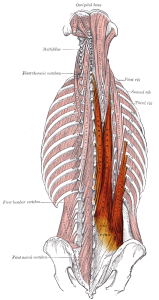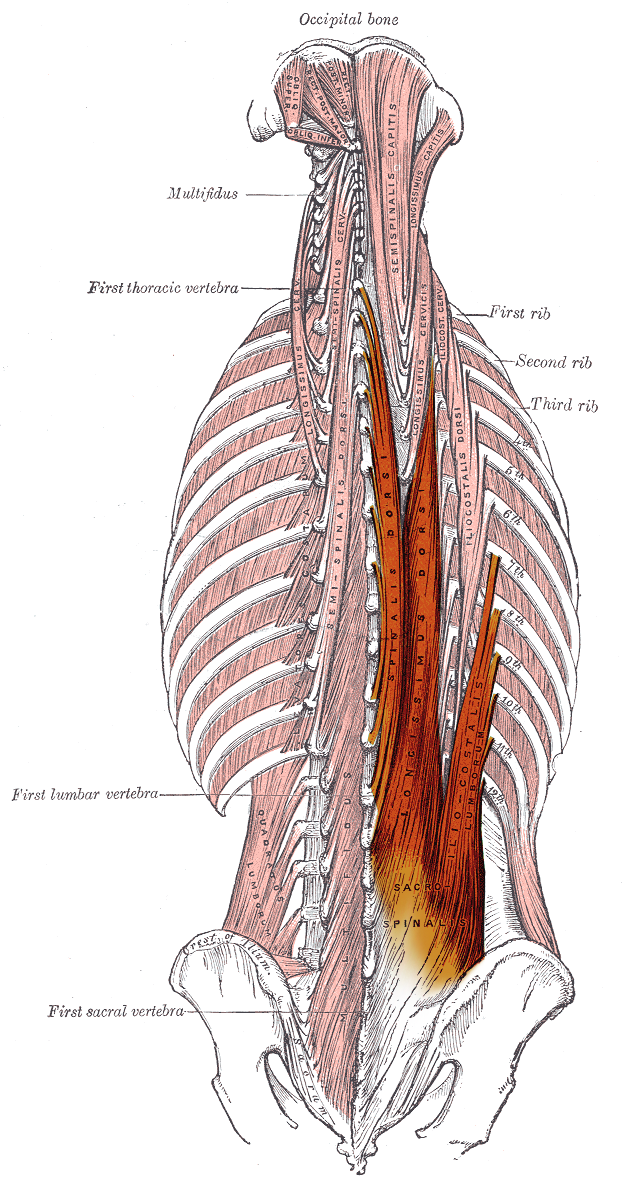Updated June 23, 2017: For exercises and information on what I did to help with lower back pain from the injury, see the video at the end of this post
The deadlift was always my strongest lift, both in absolute terms and relative to everything else. Lifting a lot of weight – if only on one exercise – fed my ego as a guy who looks good but isn’t actually that big.
I deadlifted for years and got pretty strong, but I was actually doing it wrong the entire time. My improper technique eventually caught up with me, and the same could happen to you if you’re not careful.
My Stupid, Dangerous Deadlift Mistake
One deadlift workout I was feeling pretty good: strong and hyped up on a lot of caffeine. I had always wanted to hit 4 plates and I thought, “Ok, today’s the day“.
I worked up to it slowly, and managed to pull 405 at 6’0 and about 170 lbs.
Awesome, right? I felt strong as fuck.
My lower back was sore for the next few days, but this was expected and I just waited for it to go away.
I didn’t realize something was really wrong until after a heavy shoulder workout a few weeks later. The “soreness” had disappeared, and in its place there was a constant, dull throbbing in the lower left side of my back.
The main back muscles that extend the spine (“pull” on a deadlift) are called the erector spinae or spinal erectors. If you lift for a while and they develop, then you can feel them like two cords running up and down your back, parallel to the spine. Flex your lower back and then run your fingers over the two hard ridges; those are the spinal erectors.

When I pulled 405, I severely tore the left spinal erector. I tore it so badly that it was like it disappeared. If you tried to feel it with your fingers, there was nothing there.
The Long, Slow Rehab Process
At first I thought it would heal on its own. I waited for weeks and weeks, but nothing improved. I started obsessively researching lower back injuries online, but the internet is over-saturated with garbage information and I didn’t really know what to look for.
Eventually I decided to follow the Bill Starr rehab protocol for muscle pulls. It involves performing a high number of reps with very light weight with the injured muscle, and then gradually decreasing the number of reps while increasing the weight.
So I started deadlifting again with 20lbs on the bar, for sets of 50 reps. Every day for two weeks I went to the gym to deadlift, slowly increasing the weight and lowering the number of reps. When you’re used to pushing yourself, especially in the gym, not pushing yourself can actually be the hardest thing. Deliberately keeping the weight low and trying not to overly strain the muscle took a lot of discipline.
When I got up to 135 for a set of 20 or so, I re-injured it and had to start over. The second time around I got up to 275X5, and then re-injured it again.
Clearly this wasn’t going to work. I went to see a physiotherapist, and he had me hold plank for 1 minute. I was pretty unstable.
“You’re shaking like an old man” he said. I was given core exercises and stretches to do every day, and he said the injury would be healed in 6-8 weeks.
It took over a year of consistent core work for most of the pain to subside. It took over two years to get back the strength levels I had before the injury.
Consequences of my Deadlift Mistake
Needless to day, I don’t do deadlift 1RM’s any more. In fact, I never go under 5 reps. I can’t do heavy seated shoulder press without aggravating the pain, and I can’t do weighted pull ups or arch my back on the bench press for the same reason.
My body doesn’t feel as structurally sound as it used to, and maybe it never will. All of my major lifts are weaker than they would otherwise be.
When the injury was particularly bad, I always sat with my weight leaning to the right, because otherwise there would be pain. This caused my pelvis to rotate forward and to the right, which I also had to fix.
Even now, over two and a half years after the injury, if I am sitting for long hours, I get back pain. If I skip doing core exercises once or twice, or let my hip flexors get too tight, I get back pain. I have come to terms with the fact that the injury may never heal completely and could be with me for the rest of my life.
How to Deadlift Safely and Properly
I was deadlifting wrong because I wasn’t engaging my core. Guys in the gym do this all the time, using only their lower back to pull without properly stabilizing the spine. Sooner or later, if they go heavy enough, they’re going to hurt themselves.
Sometimes this is very obvious, because you can see excessive rounding of the lower back. But:
Even if it looks like you’re deadlifting with perfect form, you can still be doing it wrong.
My form looked perfect from the outside, but I wasn’t engaging my core, and I ended up with a serious injury.
The way to decrease the likelihood of injury while deadlifting is to increase spinal stability. The key to spinal stability is intra-abdominal pressure. You can produce this by taking in a big breath, and then holding it throughout the lift.
Ever notice how powerlifters always take in a huge breath before they drop down to do a rep? This is what you should be doing as well.
The reason people wear belts when they lift is to increase intra-abdominal pressure, because their core presses out against the belt.
So take in the biggest breath you can, tighten (or “brace”) your core, and then perform the lift.
This technique is sometimes called the “Valsalva Maneuver”. Elliott Hulse explains in this video:
You can also practice by doing a plank with your diaphragm full of air. This is what it should feel like when you deadlift or squat. Everything is tense and pushing outward.
It might feel weird at first, and you might have to lower the weight on these lifts. But in the long run, not only will it save you from injury, it will also makes you stronger. Learn from my mistake, properly engage your core, and please don’t injure yourself deadlifting.
Read Next: How to Lose Fat & Get Lean Faster (Top 7 Effective Fat Loss Methods)
Update 2017: How to Reduce Lower Back Pain from Deadlift Injury
Have any thoughts on this topic? Have you been lifting without using your core this entire time? Do you have any other suggestions for avoiding injuries? Let us know in the comments section below.

